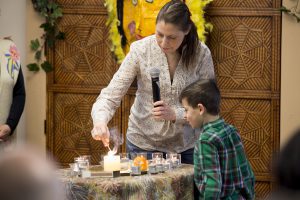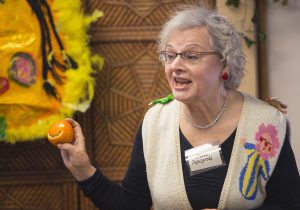Author: Isabel Wilkerson (2010, Random House)
Reviewed by Marc Bernstein
The American civil-rights movement has never wanted for chroniclers. Authors, filmmakers, and photographers have all been drawn to its outsized characters, its heroic non-violence, its triumphant climax in legislation that dismantled the Jim-Crow South. The Great Migration of 6 million blacks from the South to the North and West has not had similar appeal. This was a demographic movement without a leader; it occurred over a protracted, not a concentrated, period, and its resolution was ambiguous, as blacks faced new kinds of discrimination in the North. So, the Great Migration never found its bard—until recently.
Isabel Wilkerson, a Pulitzer Prize-winning journalist, has written a magnificent book about the migration. The Warmth of Other Suns: The Epic Story of America‘s Great Migration tells the full tale, incorporating the latest sociological evidence, yet achieves a narrative momentum that propels the story—and the reader—along. Who would have thought that social history would read like a novel?
A brilliant storytelling strategy is key to the book’s success. Wilkerson captures the Great Migration through the lives of three individuals: Ida Mae Gladney, a sharecropper from Mississippi, George Starling, a fruit picker from Eustis, Florida, and Robert Foster, a doctor from Monroe, Louisiana. Each has a background different from the others, each heads to a different part of the country; each suffers uniquely. As rounded as any characters in a novel, these three figures bring the historic sweep of the migration down to a personal level. “You will never forget these people,” wrote Gay Talese.
Wilkerson begins her narrative by looking at her protagonists in their hometowns before they migrate. This gives her the opportunity to convey to the reader the Jim Crow South, its economic system that kept blacks near penury; its rituals of deference that humiliated blacks but which they had to obey; its ubiquitous violence. The departure of both Gladney and Starling is precipitated by violence or the threat of violence.
Starling is a particularly interesting case. He got a tip that he was going to be lynched. He was guilty of organizing fruit pickers to seek better wages, something unheard of in Eustis Florida, or probably anywhere else in the South. He wisely left town in a hurry.
White flight and race riots: But whether their departure was precipitous or well planned, the migrants had contacts in their places of destination. Friends and family who had preceded them (the Great Migration had begun during WWI) could provide temporary lodging, tips on employment, the lay of the new land. But the old timers could not shield migrants from the North’s own forms of discrimination, especially in housing. Black newcomers faced everything from restrictive covenants, to white flight, to outright race riots when they tried moving into certain neighborhoods.
While discussing Ida Mae’s experiences in Chicago, Wilkerson describes the fate of the Clarks. Harry Clark, like Ida Mae, had come to Chicago from Mississippi, and in 1949 sent for his family. When in 1951 the Clarks tried to move into an apartment in all white, working class Cicero, Illinois, they got a reception they had not expected. It began with provocation by whites, but ended when whites bombed the entire apartment building, attacked police cars and hurled stones at firefighters trying to put out the blaze.
Such events gave credence to a trenchant observation Wilkerson makes earlier in her book:
Riots would become to the North what lynchings were to the South, each a display of uncontained rage by put-upon people directed toward the scapegoats of their condition.
Migrants compared favorably: Although Wilkerson never loses track of her three main characters as their lives unfold in their new homes, she challenges the myths that have sprung up about the migrants as a whole. Social science has helped propagate the view that when compared with established black residents, migrants were less educated, lower in socio-economic status, more likely to bare children out of wedlock and more likely to be on welfare. New data, Wilkerson shows, proves all these assertions false. Migrants compared favorably on all these characteristics with local blacks, and even more striking, their fertility rates were lower than Eastern and Southern European immigrants arriving at the same time.
All this leads Wilkerson to suggest that the migrants were more victims than culprits of big-city pathology, with its high degree of family instability, drug use, and prostitution. (Two of the three protagonists end up losing family members to the temptations of the city, reinforcing her view that the Great Migration had mixed outcomes.)
Despite the dollops of sociology, Wilkerson has produced a work of literary nonfiction that ensnares the reader like a novel. Here, for example, are her personal observations of Dr. Foster, the most economically successful of her characters, but ultimately the most tragic:
“He gestures toward the living room, an imposing museum of space that dwarfs him in its volume, fairly frozen in the sea foam carpet and hot pink tulip chairs out of a sherbety Doris Day movie from the fifties. The whole effect is as starched and formal as the tuxedos he used to wear to the parties he threw for himself back when his wife, Alice, was alive and the money was raining down like confetti. He seems accustomed to people fawning over the place and, with the prim air of leading men in movies back from the forties, insists on serving his guests a slice of lemon pound cake and vanilla ice cream on Rosenthal china, whether they would like to have it or not.”
Along with Gladney and Starling, the flamboyant, egocentric Dr. Foster enables Wilkerson to offer us a view of the Great Migration in all its surprising variety.
Marc Bernstein is a longtime member of the Ethical Culture Society of Bergen County and former archivist for the American Ethical Union.


